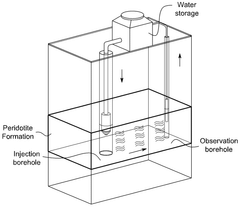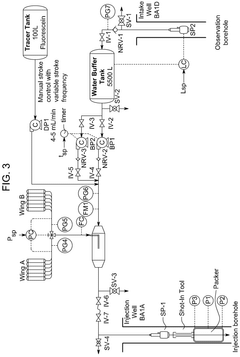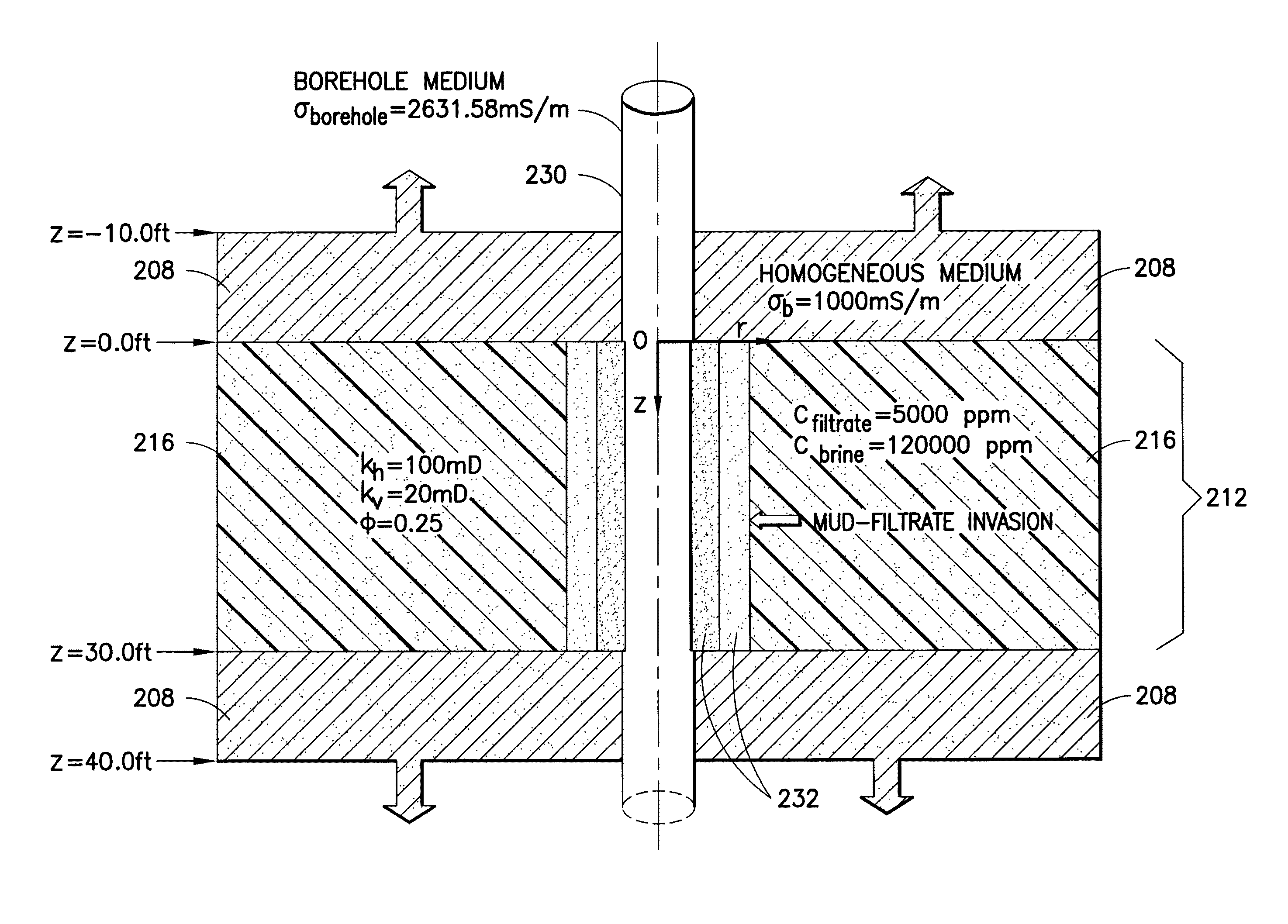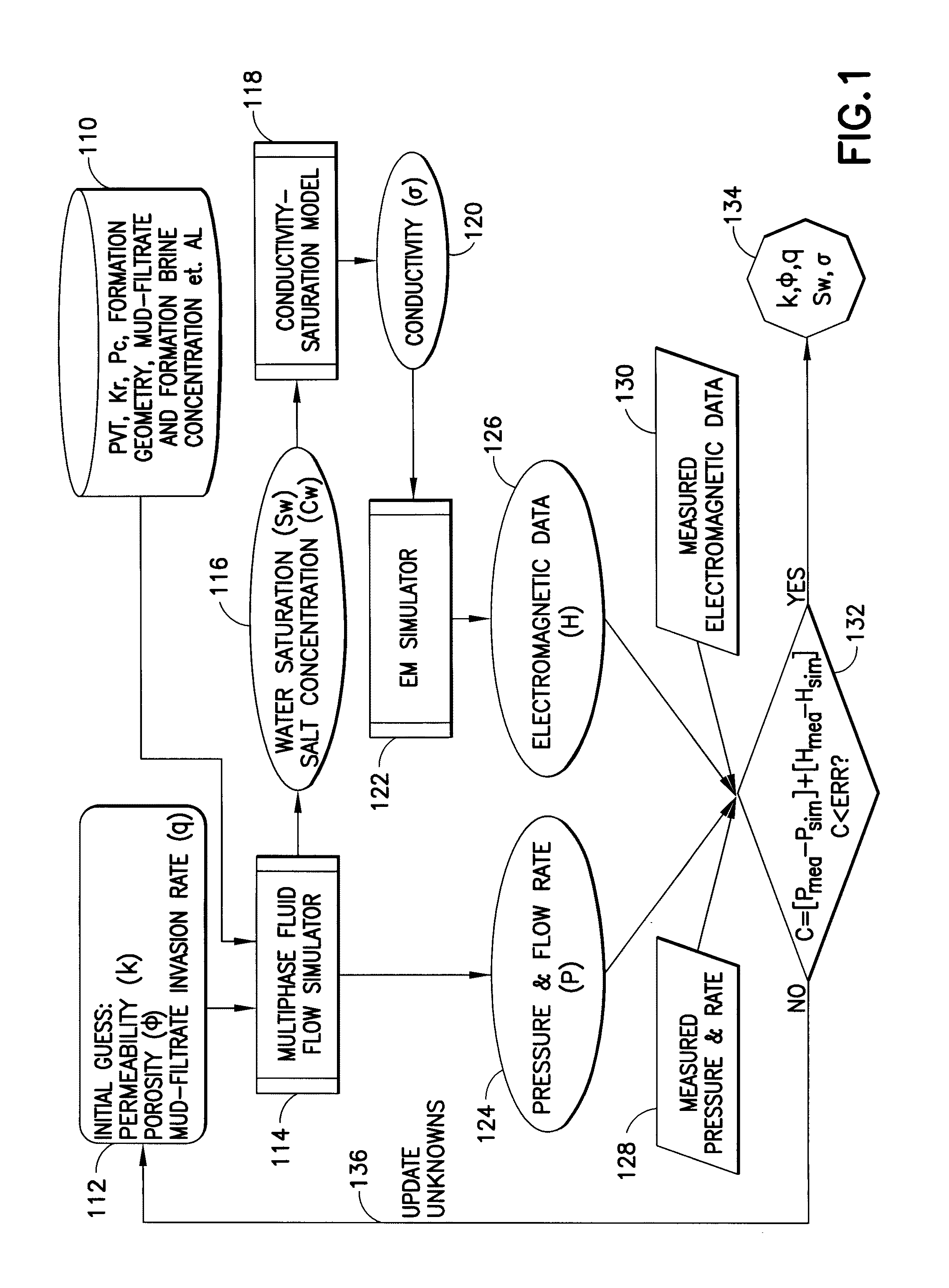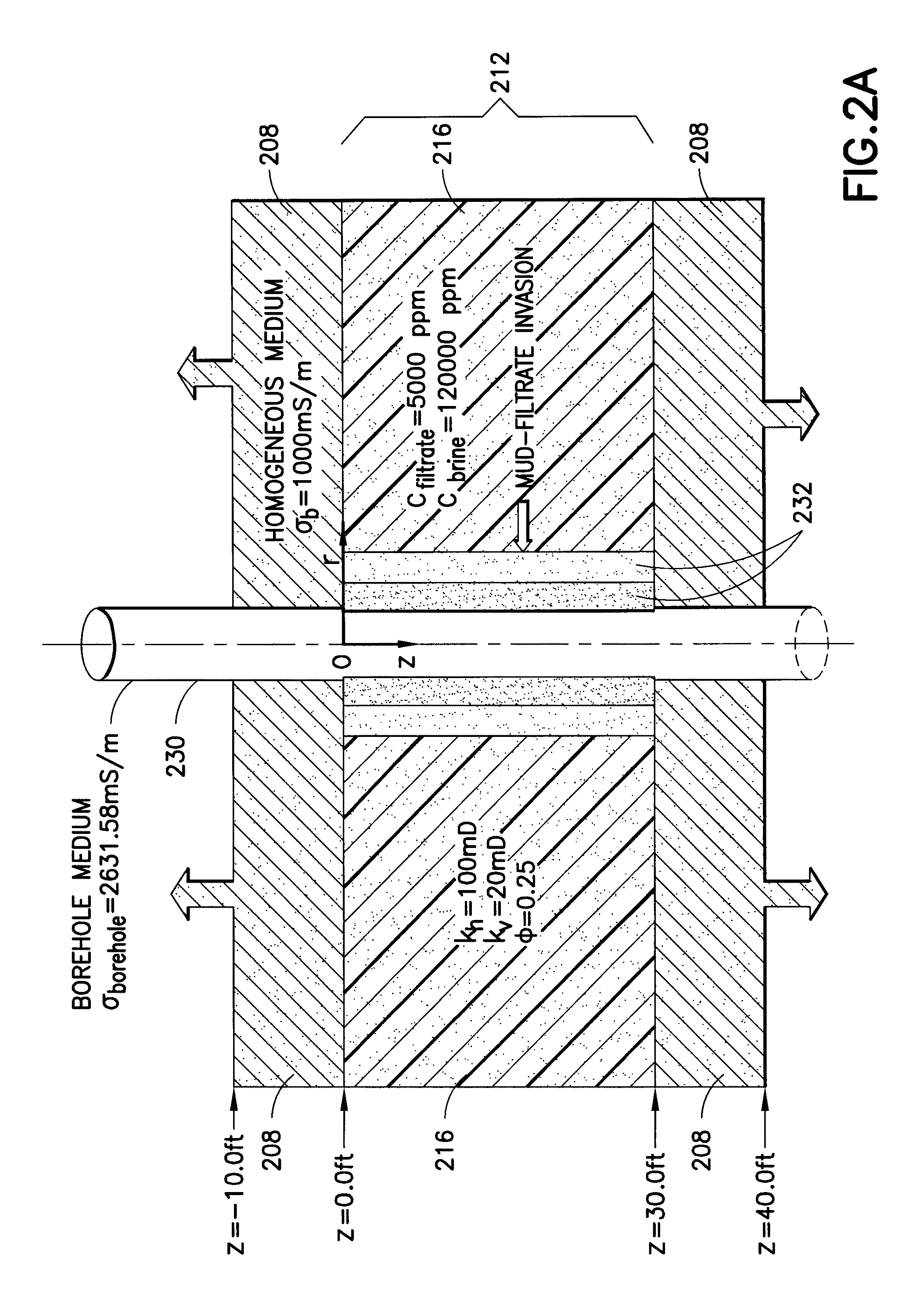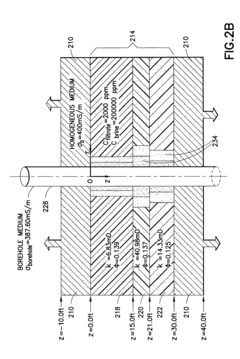Combining Fluid Dynamics Models with Peridotite Composition Studies
JUL 24, 20258 MIN READ
Generate Your Research Report Instantly with AI Agent
Patsnap Eureka helps you evaluate technical feasibility & market potential.
Fluid-Peridotite Modeling Background and Objectives
The study of fluid dynamics in conjunction with peridotite composition represents a critical intersection of geophysics and geochemistry, offering profound insights into Earth's mantle processes. This research area has evolved significantly over the past decades, driven by the need to understand the complex interactions between fluids and mantle rocks that shape our planet's interior dynamics.
Peridotite, the dominant rock type in Earth's upper mantle, plays a crucial role in various geological processes, including partial melting, metasomatism, and mantle convection. The composition of peridotite, primarily consisting of olivine, orthopyroxene, and clinopyroxene, significantly influences its physical properties and behavior under different pressure and temperature conditions.
Fluid dynamics models, on the other hand, provide a mathematical framework for describing the motion of fluids and their interactions with solid materials. When applied to mantle processes, these models help elucidate phenomena such as melt migration, chemical transport, and the formation of mantle heterogeneities.
The integration of fluid dynamics models with peridotite composition studies aims to bridge the gap between theoretical predictions and observed geochemical and geophysical data. This combined approach allows researchers to simulate and analyze complex mantle processes more accurately, taking into account both the physical behavior of fluids and the chemical characteristics of the host rock.
Key objectives of this research include:
1. Developing more sophisticated models that accurately represent the multiphase nature of fluid-rock interactions in the mantle.
2. Improving our understanding of melt generation, migration, and extraction processes in various tectonic settings.
3. Investigating the role of fluids in mantle metasomatism and the formation of chemical heterogeneities.
4. Enhancing our ability to interpret seismic data and other geophysical observations in terms of mantle composition and fluid content.
5. Exploring the implications of fluid-peridotite interactions for global geodynamic processes, such as plate tectonics and mantle convection.
By combining fluid dynamics models with peridotite composition studies, researchers aim to create a more comprehensive and realistic representation of Earth's mantle processes. This integrated approach has the potential to revolutionize our understanding of the planet's interior dynamics and provide valuable insights into the long-term evolution of Earth's geochemical and geophysical systems.
Peridotite, the dominant rock type in Earth's upper mantle, plays a crucial role in various geological processes, including partial melting, metasomatism, and mantle convection. The composition of peridotite, primarily consisting of olivine, orthopyroxene, and clinopyroxene, significantly influences its physical properties and behavior under different pressure and temperature conditions.
Fluid dynamics models, on the other hand, provide a mathematical framework for describing the motion of fluids and their interactions with solid materials. When applied to mantle processes, these models help elucidate phenomena such as melt migration, chemical transport, and the formation of mantle heterogeneities.
The integration of fluid dynamics models with peridotite composition studies aims to bridge the gap between theoretical predictions and observed geochemical and geophysical data. This combined approach allows researchers to simulate and analyze complex mantle processes more accurately, taking into account both the physical behavior of fluids and the chemical characteristics of the host rock.
Key objectives of this research include:
1. Developing more sophisticated models that accurately represent the multiphase nature of fluid-rock interactions in the mantle.
2. Improving our understanding of melt generation, migration, and extraction processes in various tectonic settings.
3. Investigating the role of fluids in mantle metasomatism and the formation of chemical heterogeneities.
4. Enhancing our ability to interpret seismic data and other geophysical observations in terms of mantle composition and fluid content.
5. Exploring the implications of fluid-peridotite interactions for global geodynamic processes, such as plate tectonics and mantle convection.
By combining fluid dynamics models with peridotite composition studies, researchers aim to create a more comprehensive and realistic representation of Earth's mantle processes. This integrated approach has the potential to revolutionize our understanding of the planet's interior dynamics and provide valuable insights into the long-term evolution of Earth's geochemical and geophysical systems.
Geodynamic Applications and Market Analysis
The integration of fluid dynamics models with peridotite composition studies has significant geodynamic applications and market potential. This research area bridges the gap between theoretical geophysics and practical Earth science applications, offering valuable insights into mantle dynamics, plate tectonics, and mineral resource exploration.
In the geodynamic realm, this combined approach enhances our understanding of mantle convection processes. By incorporating peridotite composition data into fluid dynamics models, researchers can more accurately simulate the behavior of the Earth's mantle, including heat transfer, material flow, and chemical interactions. This improved modeling capability has direct applications in predicting tectonic plate movements, understanding the formation and evolution of geological structures, and assessing seismic risks.
The market for geodynamic applications is primarily driven by the energy and mineral exploration sectors. Oil and gas companies utilize advanced geodynamic models to identify potential hydrocarbon reservoirs, especially in challenging deep-sea environments. These models, when combined with peridotite composition data, provide more accurate predictions of subsurface conditions, reducing exploration risks and costs.
Mining companies also benefit from this research, as it aids in locating mineral deposits associated with mantle-derived rocks. Peridotite-rich areas are often indicators of valuable mineral resources, including nickel, chromium, and platinum group elements. The integration of fluid dynamics and composition studies allows for more precise targeting of exploration efforts, potentially leading to significant cost savings and increased discovery rates.
The global market for geophysical services, which includes geodynamic modeling, is substantial and growing. This growth is driven by increasing demand for natural resources, the need for more efficient exploration techniques, and the push towards sustainable resource management. The combined approach of fluid dynamics and peridotite composition studies addresses these market needs by offering more sophisticated and reliable geodynamic models.
Environmental and climate research sectors also represent a growing market for this technology. Understanding mantle dynamics and composition is crucial for studying long-term climate changes, as mantle processes influence atmospheric composition through volcanic emissions. This research has implications for climate modeling and carbon cycle studies, areas of increasing importance in the face of global climate change.
Academic and research institutions form another significant market segment. Universities and government research agencies invest in advanced geodynamic modeling capabilities to further fundamental Earth science research. This drives demand for sophisticated software tools, high-performance computing resources, and specialized expertise in combining fluid dynamics with peridotite composition studies.
In the geodynamic realm, this combined approach enhances our understanding of mantle convection processes. By incorporating peridotite composition data into fluid dynamics models, researchers can more accurately simulate the behavior of the Earth's mantle, including heat transfer, material flow, and chemical interactions. This improved modeling capability has direct applications in predicting tectonic plate movements, understanding the formation and evolution of geological structures, and assessing seismic risks.
The market for geodynamic applications is primarily driven by the energy and mineral exploration sectors. Oil and gas companies utilize advanced geodynamic models to identify potential hydrocarbon reservoirs, especially in challenging deep-sea environments. These models, when combined with peridotite composition data, provide more accurate predictions of subsurface conditions, reducing exploration risks and costs.
Mining companies also benefit from this research, as it aids in locating mineral deposits associated with mantle-derived rocks. Peridotite-rich areas are often indicators of valuable mineral resources, including nickel, chromium, and platinum group elements. The integration of fluid dynamics and composition studies allows for more precise targeting of exploration efforts, potentially leading to significant cost savings and increased discovery rates.
The global market for geophysical services, which includes geodynamic modeling, is substantial and growing. This growth is driven by increasing demand for natural resources, the need for more efficient exploration techniques, and the push towards sustainable resource management. The combined approach of fluid dynamics and peridotite composition studies addresses these market needs by offering more sophisticated and reliable geodynamic models.
Environmental and climate research sectors also represent a growing market for this technology. Understanding mantle dynamics and composition is crucial for studying long-term climate changes, as mantle processes influence atmospheric composition through volcanic emissions. This research has implications for climate modeling and carbon cycle studies, areas of increasing importance in the face of global climate change.
Academic and research institutions form another significant market segment. Universities and government research agencies invest in advanced geodynamic modeling capabilities to further fundamental Earth science research. This drives demand for sophisticated software tools, high-performance computing resources, and specialized expertise in combining fluid dynamics with peridotite composition studies.
Current Challenges in Integrated Modeling
The integration of fluid dynamics models with peridotite composition studies presents several significant challenges in the current research landscape. One of the primary obstacles is the complexity of modeling multiphase flow in heterogeneous media. Peridotite, being a composite material with varying mineral compositions, introduces intricate variables that complicate traditional fluid dynamics models.
Researchers face difficulties in accurately representing the physical and chemical interactions between fluids and the diverse mineral assemblages found in peridotite. The varying grain sizes, porosity, and permeability of peridotite samples add layers of complexity to the modeling process, requiring sophisticated algorithms to capture these nuances effectively.
Another challenge lies in the scale disparity between fluid dynamics simulations and peridotite composition studies. Fluid dynamics models often operate at macroscopic scales, while peridotite compositions are analyzed at microscopic or even nanoscopic levels. Bridging this scale gap demands innovative approaches to data integration and model upscaling.
The high-pressure and high-temperature conditions typical of peridotite environments pose additional modeling challenges. These extreme conditions can significantly alter fluid properties and mineral behavior, necessitating the incorporation of complex equations of state and thermodynamic models into fluid dynamics simulations.
Furthermore, the time-dependent nature of fluid-rock interactions in peridotite systems presents computational hurdles. Long-term processes such as mineral dissolution, precipitation, and metamorphic reactions must be accounted for in models that simultaneously handle short-term fluid dynamics, stretching the limits of current computational resources.
Data scarcity and quality issues also impede progress in this field. Obtaining accurate, high-resolution data on peridotite compositions and fluid properties under relevant conditions is technically challenging and often limited. This data shortage hampers model validation and calibration efforts, leading to uncertainties in simulation results.
Lastly, the interdisciplinary nature of this research area requires collaboration between experts in fluid dynamics, petrology, geochemistry, and computational science. Developing a common language and integrated modeling framework that satisfies the rigorous standards of each discipline remains an ongoing challenge in the field.
Researchers face difficulties in accurately representing the physical and chemical interactions between fluids and the diverse mineral assemblages found in peridotite. The varying grain sizes, porosity, and permeability of peridotite samples add layers of complexity to the modeling process, requiring sophisticated algorithms to capture these nuances effectively.
Another challenge lies in the scale disparity between fluid dynamics simulations and peridotite composition studies. Fluid dynamics models often operate at macroscopic scales, while peridotite compositions are analyzed at microscopic or even nanoscopic levels. Bridging this scale gap demands innovative approaches to data integration and model upscaling.
The high-pressure and high-temperature conditions typical of peridotite environments pose additional modeling challenges. These extreme conditions can significantly alter fluid properties and mineral behavior, necessitating the incorporation of complex equations of state and thermodynamic models into fluid dynamics simulations.
Furthermore, the time-dependent nature of fluid-rock interactions in peridotite systems presents computational hurdles. Long-term processes such as mineral dissolution, precipitation, and metamorphic reactions must be accounted for in models that simultaneously handle short-term fluid dynamics, stretching the limits of current computational resources.
Data scarcity and quality issues also impede progress in this field. Obtaining accurate, high-resolution data on peridotite compositions and fluid properties under relevant conditions is technically challenging and often limited. This data shortage hampers model validation and calibration efforts, leading to uncertainties in simulation results.
Lastly, the interdisciplinary nature of this research area requires collaboration between experts in fluid dynamics, petrology, geochemistry, and computational science. Developing a common language and integrated modeling framework that satisfies the rigorous standards of each discipline remains an ongoing challenge in the field.
State-of-the-Art Coupling Techniques
01 Fluid dynamics modeling in geological processes
Advanced fluid dynamics models are applied to study geological processes involving peridotite, such as mantle convection and magma flow. These models incorporate complex variables like temperature, pressure, and composition to simulate the behavior of fluids in Earth's interior, providing insights into the formation and evolution of peridotite-rich regions.- Fluid dynamics modeling in geological processes: Advanced fluid dynamics models are applied to study geological processes involving peridotite, such as mantle convection and magma flow. These models incorporate complex variables like temperature, pressure, and composition to simulate the behavior of fluids in Earth's interior, providing insights into the formation and evolution of peridotite-rich regions.
- Peridotite composition analysis techniques: Various analytical methods are employed to study the composition of peridotite samples. These techniques include spectroscopy, X-ray diffraction, and electron microscopy, which allow researchers to determine the mineral content, elemental composition, and microstructure of peridotite specimens. Such analyses are crucial for understanding the formation conditions and geological history of peridotite bodies.
- Computational methods for peridotite studies: Advanced computational techniques are utilized to process and analyze large datasets related to peridotite composition and fluid dynamics. These methods include machine learning algorithms, data mining, and statistical modeling, which help researchers identify patterns, correlations, and trends in complex geological data, enhancing our understanding of peridotite formation and evolution.
- Integration of fluid dynamics and petrological data: Researchers are developing integrated approaches that combine fluid dynamics models with petrological data from peridotite samples. This integration allows for more accurate simulations of geological processes, taking into account the complex interactions between fluid flow and rock composition. Such integrated models provide a more comprehensive understanding of peridotite formation and alteration processes.
- Experimental studies on peridotite-fluid interactions: Laboratory experiments are conducted to study the interactions between peridotite and various fluids under controlled conditions. These experiments simulate high-pressure and high-temperature environments to investigate processes such as serpentinization, metasomatism, and partial melting. The results of these studies inform fluid dynamics models and improve our understanding of peridotite alteration in natural settings.
02 Peridotite composition analysis techniques
Various analytical methods are employed to study the composition of peridotite samples. These techniques include spectroscopy, X-ray diffraction, and electron microscopy, which allow researchers to determine the mineral content, elemental composition, and microstructure of peridotite specimens. Such analyses are crucial for understanding the formation conditions and geological history of peridotite bodies.Expand Specific Solutions03 Computational methods for peridotite studies
Advanced computational techniques are utilized to process and analyze large datasets related to peridotite composition and fluid dynamics. These methods include machine learning algorithms, data mining, and statistical modeling, which help researchers identify patterns, correlations, and trends in complex geological data, enhancing our understanding of peridotite formation and evolution.Expand Specific Solutions04 Experimental setups for fluid-peridotite interactions
Specialized experimental apparatus and methodologies are developed to study fluid-peridotite interactions under controlled conditions. These setups simulate high-pressure and high-temperature environments to investigate processes such as serpentinization, metasomatism, and partial melting of peridotite. The results from these experiments contribute to refining fluid dynamics models and improving our understanding of peridotite alteration processes.Expand Specific Solutions05 Integration of geophysical data in peridotite studies
Geophysical data, such as seismic profiles, gravity measurements, and electromagnetic surveys, are integrated with fluid dynamics models and peridotite composition studies. This multidisciplinary approach allows researchers to create more comprehensive models of Earth's interior structure and dynamics, particularly in regions where peridotite is a significant component of the lithosphere or upper mantle.Expand Specific Solutions
Key Research Groups and Institutions
The research on combining fluid dynamics models with peridotite composition studies is in an emerging phase, with growing interest due to its potential applications in carbon sequestration and geothermal energy. The market size is expanding as environmental concerns drive investment in carbon capture technologies. While the technology is still developing, companies like Schlumberger, PetroChina, and Saudi Aramco are investing in related research. Academic institutions such as the University of Wyoming and King's College London are also contributing to advancements in this field, indicating a collaborative approach between industry and academia to mature this technology.
Schlumberger Technologies, Inc.
Technical Solution: Schlumberger has developed an integrated approach combining computational fluid dynamics (CFD) with peridotite composition studies for enhanced reservoir characterization. Their method utilizes high-resolution 3D imaging of peridotite samples to create detailed digital rock models[1]. These models are then used in CFD simulations to predict fluid flow behavior in complex peridotite formations. The company has also incorporated machine learning algorithms to analyze large datasets of peridotite compositions, enabling more accurate predictions of reservoir properties and fluid dynamics[2]. This combined approach allows for better understanding of fluid-rock interactions in ultramafic environments, crucial for geothermal energy exploration and carbon sequestration projects[3].
Strengths: Comprehensive integration of CFD and petrological data, advanced imaging technologies, and machine learning capabilities. Weaknesses: High computational costs and potential limitations in scaling to field-level applications.
China Petroleum & Chemical Corp.
Technical Solution: China Petroleum & Chemical Corp. (Sinopec) has developed a novel approach to combining fluid dynamics models with peridotite composition studies, focusing on applications in unconventional oil and gas reservoirs. Their research utilizes advanced micro-CT scanning techniques to create high-resolution 3D models of peridotite samples[1]. These models are then integrated into multi-phase fluid flow simulations, accounting for the unique mineralogical and textural characteristics of peridotites[2]. Sinopec has also developed proprietary software that incorporates geochemical data from peridotite samples to refine fluid dynamics models, improving predictions of fluid behavior in serpentinized peridotite formations[3]. This integrated approach has been successfully applied in several of Sinopec's exploration projects, particularly in regions with complex ultramafic geology.
Strengths: Strong integration of petrological data with fluid dynamics models, extensive field application experience. Weaknesses: Potential limitations in handling extreme pressure and temperature conditions typical of deep peridotite formations.
Innovative Approaches in Multiphysics Modeling
System and method for permanent carbon dioxide sequestration using a renewable energy source
PatentPendingCA3191648A1
Innovation
- Injecting solubilized carbon dioxide into peridotite rock formations under controlled temperature and pressure conditions, enhanced by the presence of water, to accelerate mineralization reactions, converting CO2 into stable carbonate minerals like magnesite and calcite, utilizing renewable energy sources for the process.
Estimating petrophysical parameters and invasion profile using joint induction and pressure data inversion approach
PatentActiveUS20100185393A1
Innovation
- A method that directly inverts average mud-filtrate invasion rates and employs a joint inversion technique to provide a more reliable interpretation of formation tests, using electromagnetic survey data and fluid flow characteristics to estimate porosity and permeability without relying on complex mud-cake growth models, applicable to horizontal and deviated wells with dipping formation layers.
Computational Resources and Infrastructure
The integration of fluid dynamics models with peridotite composition studies requires substantial computational resources and infrastructure. High-performance computing (HPC) systems are essential for handling the complex calculations involved in simulating fluid dynamics within peridotite structures. These simulations often involve multi-scale modeling, from microscopic mineral interactions to macroscopic mantle convection, necessitating significant processing power and memory.
Supercomputers or large-scale cluster computing environments are typically employed for such research. These systems often utilize parallel processing techniques to distribute the computational load across multiple nodes, enabling faster and more efficient simulations. Graphics Processing Units (GPUs) have also become increasingly important in accelerating certain aspects of fluid dynamics calculations, particularly for visualization and some numerical methods.
Data storage and management systems are crucial components of the infrastructure. The simulations generate vast amounts of data that need to be stored, accessed, and analyzed efficiently. High-capacity, high-speed storage solutions, such as parallel file systems or distributed storage architectures, are often implemented to handle the data volume and I/O demands.
Networking infrastructure plays a vital role in connecting computational resources and facilitating data transfer. High-bandwidth, low-latency networks are necessary for efficient communication between compute nodes and for accessing remote data repositories or collaborating with researchers at different institutions.
Specialized software tools and libraries are integral to the research infrastructure. These include computational fluid dynamics (CFD) software packages, geochemical modeling tools, and visualization software for analyzing and interpreting results. Many of these tools are designed to take advantage of parallel computing architectures to improve performance.
Cloud computing resources are increasingly being utilized in this field, offering scalability and flexibility. Cloud platforms can provide on-demand access to HPC resources, allowing researchers to scale their computational capabilities based on the complexity of their models and the size of their datasets.
Lastly, the infrastructure must include robust data backup and recovery systems to ensure the integrity and preservation of valuable research data. This may involve redundant storage systems, regular backup procedures, and disaster recovery plans to protect against data loss or system failures.
Supercomputers or large-scale cluster computing environments are typically employed for such research. These systems often utilize parallel processing techniques to distribute the computational load across multiple nodes, enabling faster and more efficient simulations. Graphics Processing Units (GPUs) have also become increasingly important in accelerating certain aspects of fluid dynamics calculations, particularly for visualization and some numerical methods.
Data storage and management systems are crucial components of the infrastructure. The simulations generate vast amounts of data that need to be stored, accessed, and analyzed efficiently. High-capacity, high-speed storage solutions, such as parallel file systems or distributed storage architectures, are often implemented to handle the data volume and I/O demands.
Networking infrastructure plays a vital role in connecting computational resources and facilitating data transfer. High-bandwidth, low-latency networks are necessary for efficient communication between compute nodes and for accessing remote data repositories or collaborating with researchers at different institutions.
Specialized software tools and libraries are integral to the research infrastructure. These include computational fluid dynamics (CFD) software packages, geochemical modeling tools, and visualization software for analyzing and interpreting results. Many of these tools are designed to take advantage of parallel computing architectures to improve performance.
Cloud computing resources are increasingly being utilized in this field, offering scalability and flexibility. Cloud platforms can provide on-demand access to HPC resources, allowing researchers to scale their computational capabilities based on the complexity of their models and the size of their datasets.
Lastly, the infrastructure must include robust data backup and recovery systems to ensure the integrity and preservation of valuable research data. This may involve redundant storage systems, regular backup procedures, and disaster recovery plans to protect against data loss or system failures.
Environmental Implications of Peridotite-Fluid Systems
The environmental implications of peridotite-fluid systems are far-reaching and complex, with significant impacts on both local ecosystems and global geochemical cycles. These systems play a crucial role in the Earth's carbon cycle, particularly through the process of carbon sequestration. As fluids interact with peridotite rocks, they facilitate the conversion of atmospheric CO2 into stable carbonate minerals, effectively removing carbon from the atmosphere and storing it in solid form.
This natural carbon capture mechanism has attracted considerable attention as a potential solution for mitigating climate change. Research combining fluid dynamics models with peridotite composition studies has revealed that the rate and efficiency of this process are highly dependent on factors such as fluid flow patterns, temperature, pressure, and the specific mineralogical composition of the peridotite. Understanding these interactions is crucial for assessing the potential of large-scale carbon sequestration projects and their environmental impacts.
The weathering of peridotite also releases essential nutrients into the surrounding environment, influencing soil fertility and marine ecosystems. Elements such as magnesium, iron, and trace metals are liberated during fluid-rock interactions, potentially enhancing biological productivity in nearby areas. However, this process can also lead to the release of potentially harmful elements, such as nickel and chromium, which may have detrimental effects on local flora and fauna if present in high concentrations.
Furthermore, peridotite-fluid interactions can significantly alter the physical properties of the rock, leading to changes in permeability and porosity. These alterations can have profound effects on groundwater systems, potentially impacting water quality and availability in affected regions. The formation of secondary minerals during these interactions may also influence the stability of geological formations, with implications for natural hazards such as landslides and subsidence.
On a global scale, the study of peridotite-fluid systems provides valuable insights into the Earth's deep carbon cycle and its long-term evolution. By understanding these processes, scientists can better predict future climate scenarios and develop more accurate models of the Earth's carbon budget. This research also has implications for the exploration of alternative energy sources, such as geothermal energy, where knowledge of fluid-rock interactions in ultramafic environments is crucial for assessing resource potential and environmental risks.
This natural carbon capture mechanism has attracted considerable attention as a potential solution for mitigating climate change. Research combining fluid dynamics models with peridotite composition studies has revealed that the rate and efficiency of this process are highly dependent on factors such as fluid flow patterns, temperature, pressure, and the specific mineralogical composition of the peridotite. Understanding these interactions is crucial for assessing the potential of large-scale carbon sequestration projects and their environmental impacts.
The weathering of peridotite also releases essential nutrients into the surrounding environment, influencing soil fertility and marine ecosystems. Elements such as magnesium, iron, and trace metals are liberated during fluid-rock interactions, potentially enhancing biological productivity in nearby areas. However, this process can also lead to the release of potentially harmful elements, such as nickel and chromium, which may have detrimental effects on local flora and fauna if present in high concentrations.
Furthermore, peridotite-fluid interactions can significantly alter the physical properties of the rock, leading to changes in permeability and porosity. These alterations can have profound effects on groundwater systems, potentially impacting water quality and availability in affected regions. The formation of secondary minerals during these interactions may also influence the stability of geological formations, with implications for natural hazards such as landslides and subsidence.
On a global scale, the study of peridotite-fluid systems provides valuable insights into the Earth's deep carbon cycle and its long-term evolution. By understanding these processes, scientists can better predict future climate scenarios and develop more accurate models of the Earth's carbon budget. This research also has implications for the exploration of alternative energy sources, such as geothermal energy, where knowledge of fluid-rock interactions in ultramafic environments is crucial for assessing resource potential and environmental risks.
Unlock deeper insights with Patsnap Eureka Quick Research — get a full tech report to explore trends and direct your research. Try now!
Generate Your Research Report Instantly with AI Agent
Supercharge your innovation with Patsnap Eureka AI Agent Platform!

